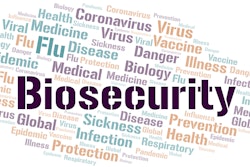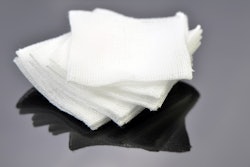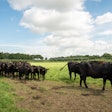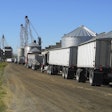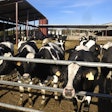The Swine Health Information Center (SHIC) has released final reports on wean-to-harvest biosecurity to reduce disease transmission.
The first study, “Mitigating disease transmission through vehicle rerouting and enhanced sanitation,” aimed to reduce the risk of disease transmission between farms through vehicle contacts. Led by Dr. Gustavo Machado of North Carolina State University, the study evaluated reduction of risk through rerouting vehicles while considering cleaning and disinfection events and effectiveness. Findings demonstrate that a vehicle rerouting system holds potential as a strategic tool for preventing and controlling the spread of diseases among farms through vehicle movements.
Substantial evidence indicates that vehicle movement is closely linked to the spread of diseases among animal production sites. To mitigate disease transmission events, vehicles undergo thorough cleaning and disinfection (C&D) procedures. However, C&D effectiveness remains a question and the frequency of C&D between farm visits is often unknown. Consequently, relying solely on vehicle C&D may be insufficient to stop the spread of diseases, and supplementary strategies are needed to prevent disease transmission events through contaminated vehicles. The objective of this study was to reduce the risk of between-farm transmission through vehicle contacts by rerouting vehicles while considering C&D events and effectiveness.
The full study summary is available here.
The second study, “Alternative cleaning methods to reduce PEDv in livestock trailers,” aimed to evaluate various cleaning protocols to mitigate porcine epidemic diarrhea virus (PEDv) spread from a contaminated trailer to the farm through foot traffic between these two areas. Efficacy was evaluated across protocols including positive control (no cleaning), dry clean – scrape and bake (TADD), volume hose wash and disinfect, power wash and disinfect, and negative control. Led by Dr. Rodger Main of Iowa State University, the study found that the volume hose and power wash and disinfect protocols demonstrated significant efficacy in reducing viral load on both trailer and farm-site surfaces.
PEDv has posed a significant threat to the U.S. swine industry since its initial introduction in 2013 and requires effective biosecurity measures for disease control. Livestock trailers used for transporting pigs play a major role in PEDv epidemiology if not adequately cleaned and disinfected. The objective of this study was to evaluate the efficacy of different cleaning and disinfection methods in reducing PEDv contamination from livestock trailers to farm-site loading areas, using molecular and bioassay techniques. Effective cleaning and disinfection of livestock trailers are crucial in mitigating PEDv spread. This study simulated foot traffic between farm-site areas and trailers to mimic field conditions and determined the efficacy of various cleaning treatments.
The study underscores the importance of thorough cleaning and disinfection protocols in enhancing biosecurity in swine production systems. Moreover, findings suggest routinely cleaning and disinfecting all market haul trailers leaving terminal points of concentration by either of the water-based trailer cleaning treatments could reduce inter-premises disease transmission associated with market haul transport and elevate preparedness across the U.S. pork industry.
The full study summary is available here.
Both studies were funded by the SHIC Wean-to-Harvest Biosecurity Research Program, in partnership with the Foundation for Food & Agriculture Research and Pork Checkoff.



